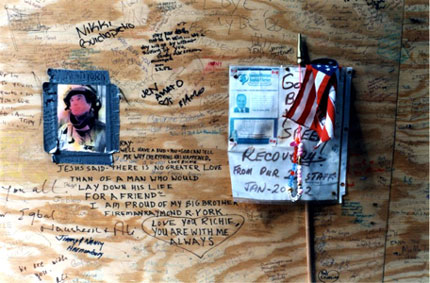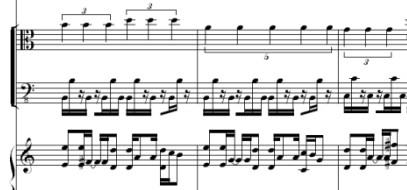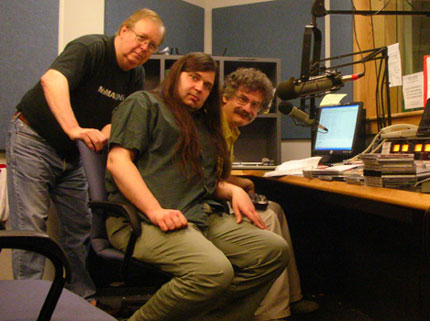The season is underway in New York and, as usual, there are a number of promising looking performances coming up. Here are a few things to look for:
Margaret Garner, Richard Danielpour’s operatic collaboration with Toni Morrison, is in mid-run at City Opera and, judging from the ads, there are plenty of seats to be had. I can’t quite stir myself enough to drag up there and sit through an evening of misery about a runaway slave who murders her daughter rather than have her captured. Doesn’t stop me from having an opinion, though. Morrison is too sanctimonious and self-important by half and Danielpour should write an opera about Omar the Tentmaker. Samuel Barber’s Vanessa opens on November 4.
Chance Encounter, On September 28, Lisa Bielawa, Susan Narucki and the new-music chamber group the Knights, will commandeer East Broadway near the Seward Park Library to perform a 4-hour work based on overheard conversation, collected over the last year and set to music. Details at Lisa’s blog.
Kronos Quartet – The indefatigueable quartet is slated for BAM’s Next Wave festival with collaborations with two Finnish composer/musicians: Kimmo Pohjonen, an accordionist and singer, and Samuli Kosminen, an accordionist and manipulator of electronic sounds. Oct. 3, 5-6.
Esa Pekka-Salonen – Another famous Finn is the subject of a Composer Portrait at Miller Theater on October 5. Performers include Imani Winds, cellist Darrett Adkins, soprano Tony Arnold and pianist Blair McMillen.
Berlin in Lights – Life is a carbaret, old chum, with a bunch of cultural events scattered around town between November 2 and 18. The centerpiece is the Berlin Philharmonic at Carnegie Hall on November 13 and 14. Simon and gang will be doing the U.S. premiere of Marcus Lindberg’s Seht die Sonne on the 13th and Thomas Adès’ Tevot on the 14th. Adès, who Simon sez is also a spectacular pianist, is doing an entire recital that will include (without electronic or mechanical assistance) Conlon Nancarrow’s fiendish Three Canons for Ursula.
That takes us up to mid-November. We’ll pick up there over the weekend. What’s hot in L.A., San Francisco, London, Grand Rapids? Give us a report.
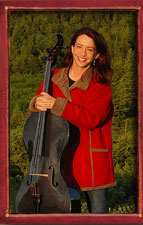 Review in yesterday’s NYT of a novel called The Spanish Bow by a Chicago-born, Alaska-domiciled writer with the unlikely name of Andromeda Romano-Law. The teaser is this: “In a dusty, turn-of-the-century Catalan village, the bequest of a cello bow sets young Feliu Delargo on the unlikely path of becoming a musician.”
Review in yesterday’s NYT of a novel called The Spanish Bow by a Chicago-born, Alaska-domiciled writer with the unlikely name of Andromeda Romano-Law. The teaser is this: “In a dusty, turn-of-the-century Catalan village, the bequest of a cello bow sets young Feliu Delargo on the unlikely path of becoming a musician.”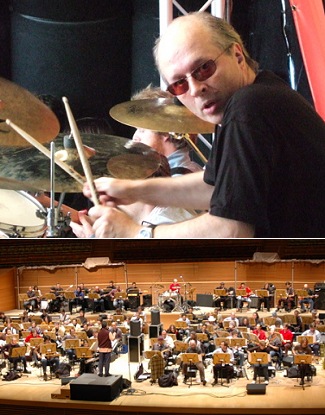 With not only an M.F.A. and Ph.D. in composition from Princeton, but a B.A. and an M.A. in Comparative Literature from Columbia (with a bit of Juilliard thrown in), you might expect some “high-concept” mixing with the music in Virgil Moorefield’s work, and so there is. But Virgil has a powerful weapon for keeping that ivory tower from becoming a tomb: he’s also a drummer. Not just any drummer, either; that’s him in the upper-center of the lower photo, the one-man motor driving Glenn Branca’s 100 guitars in Branca’s Symphony #13, “Hallucination City” (in a pic from the 2006 L.A. performance), a role he’ll be reprising when the symphony is done again this Oct. 12th at
With not only an M.F.A. and Ph.D. in composition from Princeton, but a B.A. and an M.A. in Comparative Literature from Columbia (with a bit of Juilliard thrown in), you might expect some “high-concept” mixing with the music in Virgil Moorefield’s work, and so there is. But Virgil has a powerful weapon for keeping that ivory tower from becoming a tomb: he’s also a drummer. Not just any drummer, either; that’s him in the upper-center of the lower photo, the one-man motor driving Glenn Branca’s 100 guitars in Branca’s Symphony #13, “Hallucination City” (in a pic from the 2006 L.A. performance), a role he’ll be reprising when the symphony is done again this Oct. 12th at  When he went to work for the Chamber Music Society of Lincoln Center a few years ago, Ronen Givony knew very little about classical music. Not himself a musician, but a passionate music fan, his tastes inclined to Indie-rock. He listened to Radiohead, David Byrne, Björk, and other, more obscure eclectics. At CMS he discovered classical music and was quickly smitten by old fogies like Bach, Mendelssohn, and Ligeti. Seeing his fellow Indie fans as a natural audience for classical music, he proposed a series of joint rock/classical concerts at Lincoln Center. He now works at Nonesuch.
When he went to work for the Chamber Music Society of Lincoln Center a few years ago, Ronen Givony knew very little about classical music. Not himself a musician, but a passionate music fan, his tastes inclined to Indie-rock. He listened to Radiohead, David Byrne, Björk, and other, more obscure eclectics. At CMS he discovered classical music and was quickly smitten by old fogies like Bach, Mendelssohn, and Ligeti. Seeing his fellow Indie fans as a natural audience for classical music, he proposed a series of joint rock/classical concerts at Lincoln Center. He now works at Nonesuch.